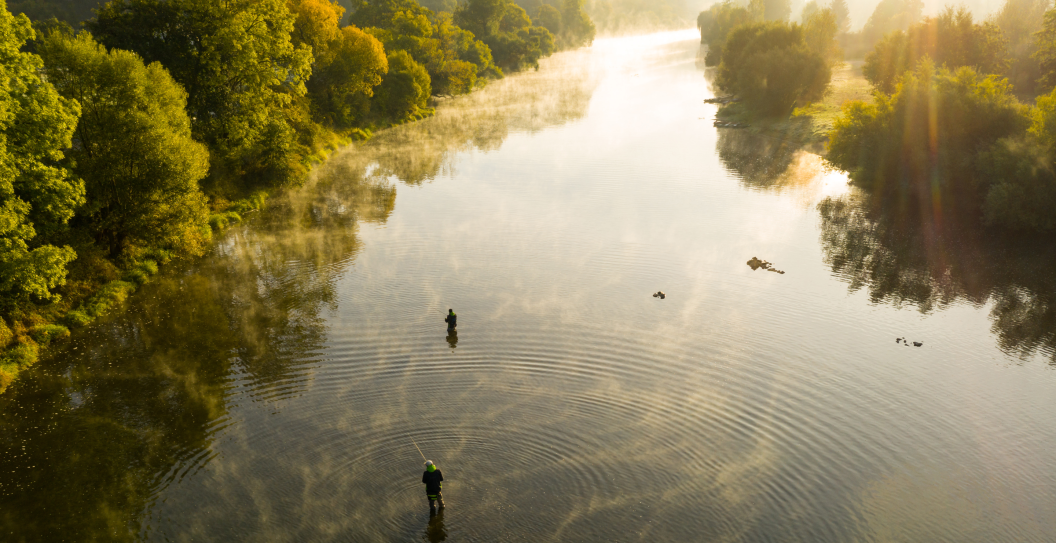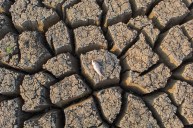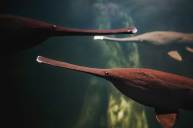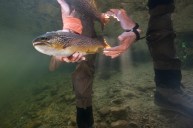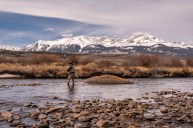Volunteer efforts at the community level are what keep our wild spaces clean and accessible. Helping to protect and conserve our rivers, in particular, ensures that everyone—anglers, kayakers, rafters, dogs and kids who love a good swimming hole—all have a place to play and enjoy for decades to come.
Because, let's be real: Nothing is more spectacular on a warm day than heading to the your local rushing water. The U.S. has over 250,000 rivers that provide abundant recreational opportunities for the avid outdoorsperson, including fishing, hiking, and rafting.
When we work to conserve and sustain our rivers in particular, we expand wildlife corridors for hunting and fishing, strengthen wetland connectivity between inland and coastal habitats, and protect clean water sources.
Want to wade deeper into finding volunteer opportunities near you? Check out our list, below, as well as the national nonprofit organization River Network, which is a rallying voice for communities, large and small, in the U.S. to connect and collaborate in river conservation stewardship.
Why You Should Volunteer to Conserve Rivers
Our rivers facilitate transportation, supply water for agriculture, provide critical habitat for wildlife and plants, and sustain our communities with drinking water. These watersheds and riparian corridors—the lush habitat along the river's edge—deserve to be treated with respect, but we have loved them nearly to death, in some cases without realizing it. So, what do we do about that?
Talking about volunteering is one thing, but when faced with deciding where your efforts will make a difference in the world, lacing up those boots and getting them muddy—or even knowing where to invest your funds—can be daunting. We've compiled a list of some lesser-known river organizations who are always looking for volunteers or, yes, monetary donations. They're organized by geographical region, so you can support that river just outside your backdoor—the one that makes you happy every summer weekend.
River Conservation Organizations: West Region
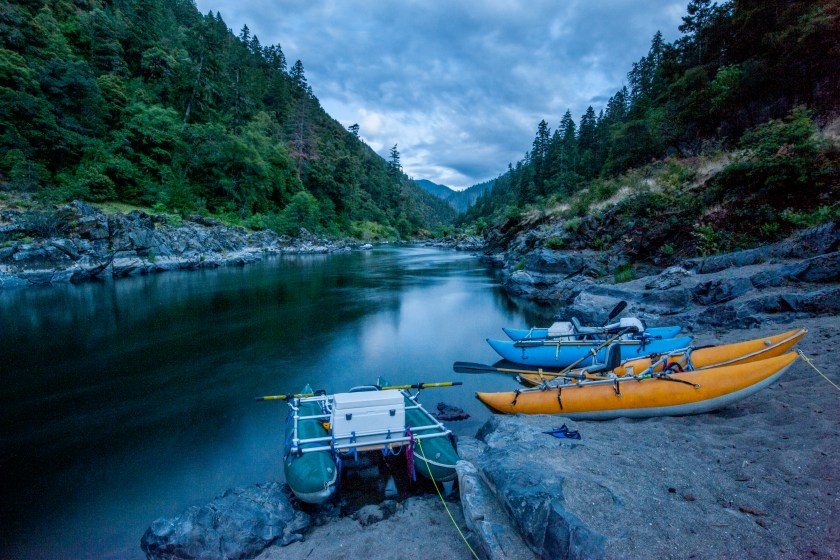
Getty Images, alacatr
Puget Soundkeeper Alliance, Washington
Over 80 percent of the water that feeds Puget Sound comes from a network of 10,000 rivers and streams. The rainwater that runs off city streets is Puget Sound's number one toxic threat, according to the State of Washington's Department of Ecology. With the assistance of its volunteers, Puget Soundkeeper Alliance (PSA) endeavors to reduce stormwater toxicity through public education about best practices to avoid toxic waste in water, and the creation of local policy. Its volunteer programs include cleaning up microplastic, monitoring pollutants in mussels, kayak-led local cleanups for volunteers 12 years old and up, and salmon surveys that monitor the toxicity of the Sound.
Rogue River Watershed Council, Oregon
Located in southern Oregon, the Rogue River Watershed Council (RRWC) describes its work as a form of resiliency. Executive Director Brian Barr sums up RRWC's drive as the ability to "bounce back from difficulty" when it comes to environmental threats such as fires, ongoing droughts, invasive species, and excessive logging. The council and its volunteers work with landowners to restore the riparian corridors within this watershed by planting native trees and shrubs, thus reestablishing natural habitats for fish and wildlife.
Kern River Conservancy, California
In 2013, Los Angeles resident Gary Ananian had had enough of the vandalism, tagging, and garbage strewn along the Kern River. He decided it was time for someone to stand up and make a difference; to be the voice for the Kern River. Thus began the Kern River Conservancy (KRC), which, with the assistance of the River Network, has grown to include more than 600 volunteers. KRC actively seeks volunteers to hit the ground with trash bags in hand.
River Conservation Organizations: Rocky and San Juan Mountain Regions
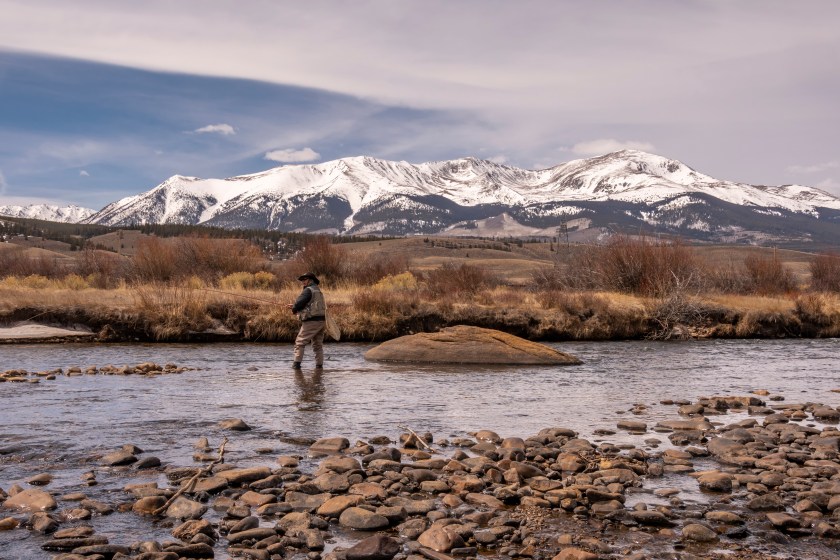
Getty Images, skibreck
Bitter Root Water Partnership, Idaho and Montana
Part of the Rocky Mountains and Idaho Batholith, the Bitterroot Mountains are located in the panhandle of Idaho and westernmost Montana. Working with key partners in its community, the Bitter Root Water Partnership (BRWP) strives to create healthy habitats along the Bitterroot River. BRWP volunteers replant overused river access sites, enabling nature, through vegetation regrowth, to slow the erosion process along shorelines. Its largest single event, BRWP's annual river cleanup, is held every August, with more than 100 people in attendance this year, cleaning up 1,000 pounds of trash.
Snake River Fund, Wyoming
Located in Jackson Hole, the Upper Snake River Watershed is one of the few remaining intact riparian ecosystems in the U.S. Formed in 1999, the Snake River Fund has kept the use of this river fee-free for outdoor enthusiasts. As funding increased, the SRF expanded its reach in educating locals, visitors, and the river and fishing guides who make their living on its waters. Through advocacy and partnerships with other local nonprofits, the SRF has parlayed its donations into a broad-reaching SRF community events calendar, with volunteer and educational events such as regular cleanups, a monthly Guide Night, and the annual Snake River Fest for rafters and kayakers, which culminates in an afternoon of festivities both educational and fun.
Amigos Bravos, New Mexico
In 1988, with the threat of a proposed building of a mine tailings facility in the Guadalupe Mountains that would threaten the Wild and Scenic Rio Grande, a group of concerned New Mexicans banded together to create the Amigos Bravos, Spanish for fierce or brave friends. This non-profit organization achieved its first success in 1990, by halting all future mining activities in the Guadalupe Mountains. Based in Taos, New Mexico, its volunteer work ranges from river cleanup and restoration to water quality monitoring.
San Juan Citizens Alliance, New Mexico, Colorado, Utah, Arizona
Sometimes volunteering only requires picking up a pen to sign a petition or write a letter to your congressperson. Funded by over 1,000 dues paying members, the San Juan Citizens Alliance functions as a watchdog in its broad efforts to protect both land and waterways of the San Juan Basin, which encompasses 7,500 square miles and resides in northwestern New Mexico, southwestern Colorado, and parts of Utah and Arizona. Watersheds supported by the SJCA are the Animas, San Juan, and Dolores Rivers. SJCA's website connects citizens to petitions and up-to-date media regarding the protection of these public lands for continued mixed-use. SJCA volunteers are always welcome to help out its partners in fun events like the Animas River Allies annual kickoff party.
River Conservation Organizations: Midwest Region
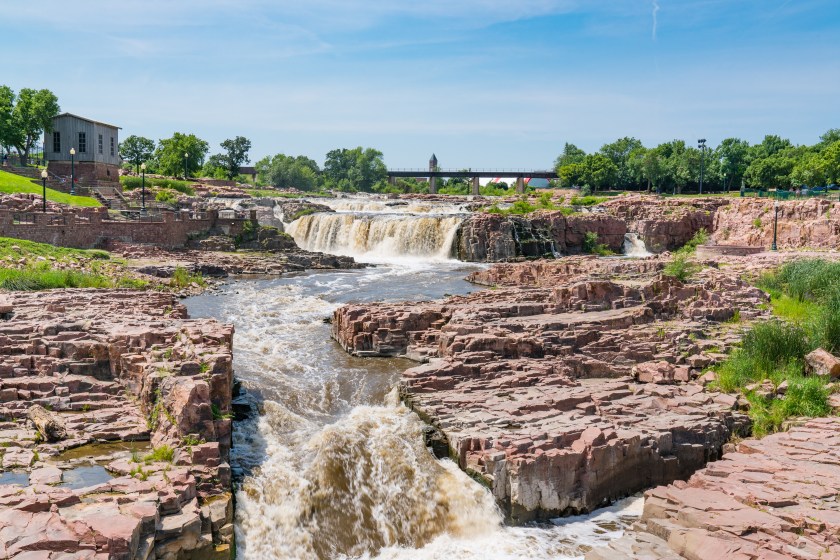
Getty Images, pabradyphoto
Friends of the Big Sioux River, South Dakota
Considered the backbone of eastern South Dakota, the Big Sioux River is 419 miles long, swirling past town after town. Friends of the Big Sioux River offers companies and organizations opportunities to participate in the cleanup of the Big Sioux River and local streams and rivers that are its tributaries. FBSR organizes volunteer work in water quality monitoring, provides a public policy and advocacy platform, promotes river restoration, and facilitates community education. Individuals can volunteer to contribute to scientific data collection, traveling the Big Sioux River watershed as a member of the Friends' water-testing team.
Iowa Rivers Revival, Iowa
In 2016, the Iowa Rivers Revival, along with several partners, successfully pushed through a law to protect Iowa's diverse turtle population by limiting the duration and quantity of its harvest. IRR, which had been actively advocating for statewide river restoration for over 10 years, continued its momentum the same year with the re-establishment of the Service Squad, educating and advocating communities on river clean-up. Membership in IRR not only supports its extensive volunteer network, but funds IRR's educational programs.
Friends of the Fox River, Illinois
Illinois's Friends of the Fox River has a long history of grabbing enthusiasts by the shirttails, placing paddles, shovels, and trash bags in their hands, and plunking them down beside the river or in a watercraft, heading downstream. The organization can proudly boast that its president, Gary Swick, along with other key leaders, has introduced over 30,000 students, teachers, and volunteers to their local streams. In April 2023, Swick's team was immortalized in the premier showing of Watershed Warriors, a short film by Rivers of Life, as part of an international series connecting communities and individuals world-wide in river restoration and rehabilitation. FOTFR is an example of leadership in environmental education to create a ripple effect for future generations—its website even offers easy steps to create your own cleanup crew.
Missouri River Relief, Missouri
In 2001, the Missouri River Relief began as a single cleanup event along the banks of the Missouri River in Easley, Missouri, with 400 volunteers. The number of enthusiastic Midwesterners has skyrocketed into the thousands and MRR's annual cleanups encompass multiple events spanning more than 200 miles of the Missouri River, from Kansas City, Missouri to Columbus, Ohio. MRR prides itself on its organization of a wide variety of fun and gritty volunteer work available throughout the calendar year.
River Conservation Organizations: South Region
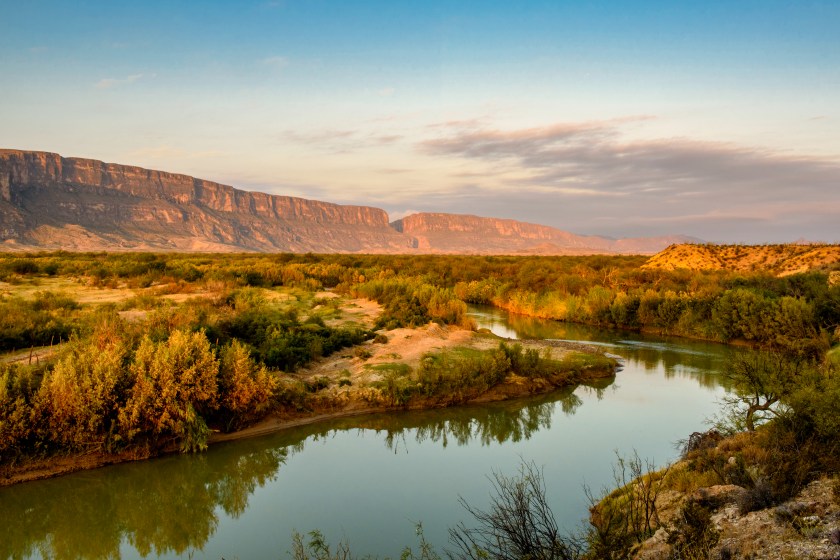
Getty Images, Tim Speer
The Meadows Center for Water and the Environment, Texas
Texas State University was the recipient of a generous grant from the Meadows Foundation in 2012, which enabled the institution to establish the Meadows Center for Water and the Environment in San Marcos as its educational hub, focusing on research and stewardship of clean, accessible waterways throughout Texas. At its epicenter: the restoration of Spring Lake, an artesian spring considered one the largest in the world, which flows naturally up from ground water. MCWE encourages community involvement in numerous ways to assist in the future health of Texas rivers and streams. You can even become a "citizen scientist" to lead conservation efforts as a part of "Texas Stream Team."
Friends of Lafitte Greenway, Louisiana
In 2015 the Lafitte Greenway, previously an abandoned railway corridor, opened as a 2.6-mile urban greenway. This project, which connects multiple communities throughout New Orleans, was years in the making, thanks to the efforts of the nonprofit Friends of Lafitte Greenway. In addition to providing a community gathering place, this tract of land includes bioswales—green areas planted with native plants designed to hold water and release it slowly back into the surrounding landscape, which is a natural way to manage stormwater runoff. Since its opening, community volunteers have planted over 500 trees. Continued Friends' volunteer projects include the removal of invasive species, organization of educational and recreation activities for adults and kids, and landscaping projects, such as remulching around trees.
Coastal Carolina River Watch, North Carolina
Two of the primary goals of the Coastal Carolina River Watch are to "elevate the voices from the coastal community" and "promote citizen stewardship." CCRW serves 320 miles of rivers and streams, 140,104 acres of estuaries, and 129 miles of coastline in the White Oak River Basin. CCRW offers its volunteers a truly boots-on-the-ground opportunity to become a Water Quality Advocate, assisting in community education and stewardship of this expansive region. In addition, CCRW's Equity in the Environment program pairs under-represented high school students with environmental mentors in outdoor educational settings while promoting inclusivity to marginalized populations.
Apalachicola Riverkeeper, Florida
First conceived in 1998, Apalachicola Riverkeeper advocates for and protects 160 miles of river throughout northern reaches of Florida, from the headwaters of the Chatahoochi River in Georgia to the Apalachicola River's terminus in Gulf of Mexico—in total, over 19,000 square miles. The Volunteer Corp assists in river cleanup duties, facilitates administrative office work, and participates in educational outreach programs which focus on the stewardship of the Apalachicola River and Bay.
River Conservation Organizations: Northeast Region
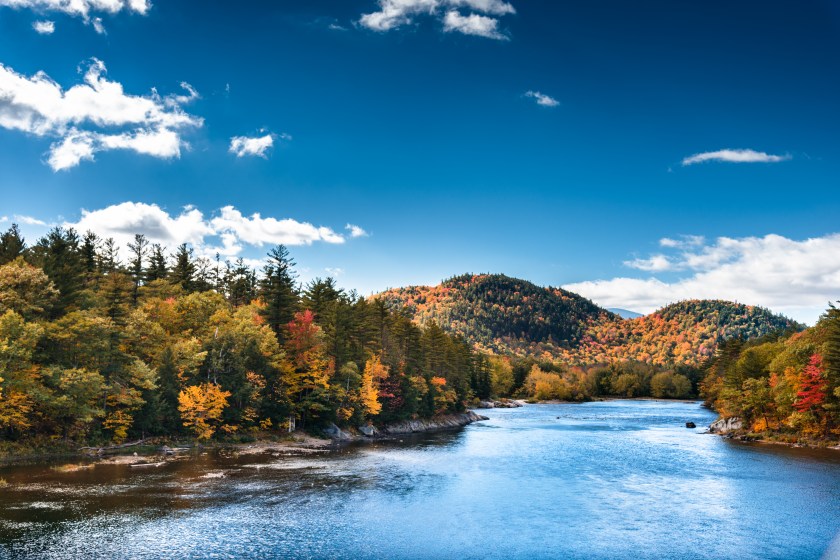
Getty Images, franckreporter
White River Partnership, Vermont
In 2000, four years after it was formed, White River Partnership was one of 12 groups nationally selected to receive a U.S. Forest Service Community-Based Watershed Restoration Partnership Grant in recognition of its community-based approach to resolving watershed problems. Encompassing 710 square miles, this watershed includes the Connecticut River, which is significant for being one of the last free-flowing, undammed rivers in the state of Vermont. Volunteer activities throughout the summer include monthly trailhead cleanup, educational outreach, and water quality monitoring.
Riverkeeper, New York
Stewardship of the Hudson River and the Hudson Bay is an integral component of Riverkeeper, founded in 1966 as the Hudson River Fishermen's Association (HRFA). This nonprofit focuses on water-quality assessment for the Hudson River, the largest tributary to Hudson Bay and the main source of New York City's drinking water supply. The organization also supports efforts to maintain the integrity of the fish population in both fresh and saltwater as well as public recreation and leisure access along the river's length. Its extensive opportunities for members and volunteers include community outreach events, cleanup and restoration projects such as tree planting, and the opportunity to become a citizen scientist to assist in water-quality monitoring.
Maryland Coastal Bays Program, Maryland
While not technically a small river organization, the Maryland Coastal Bays Program (MCBP) deserves acknowledgment for the scope of coastal watersheds that fall under its care. It's one of 28 National Estuary Programs (NEPs) that receives funding from the Environmental Protection Agency (EPA) to work toward the restoration and protection of "estuaries of national significance." The abundance of wildlife and aquatic resources in these coastal bays allows locals and tourists alike to enjoy an array of outdoor activities. The collective watershed encompasses approximately 175 square miles of Maryland's coastal plain with a total of five coastal bays, 71,000 acres of water, 248 miles of shoreline, and nearly 35,000 acres of wetlands. MCBP's volunteer options are as expansive as the lands and waterways it strives to protect, from funding the Adopt-a-Beach Program to picking up microplastic as a member of the Nurdle Patrol.
READ MORE: 6 Best Drift-Boat Fishing Trips in the Northeast
